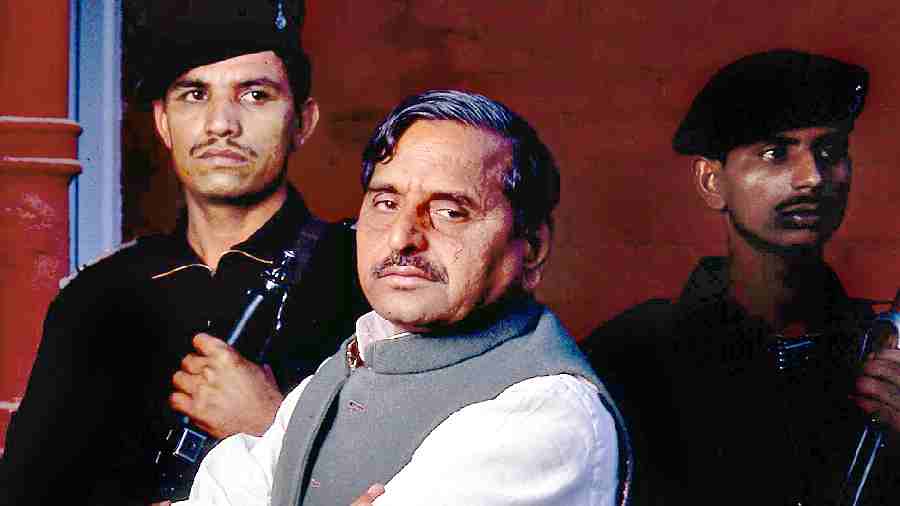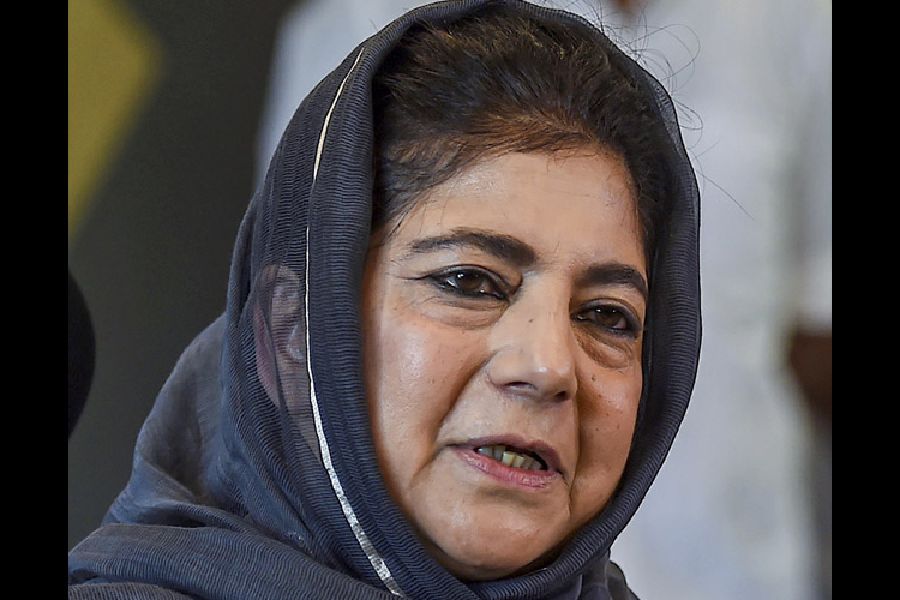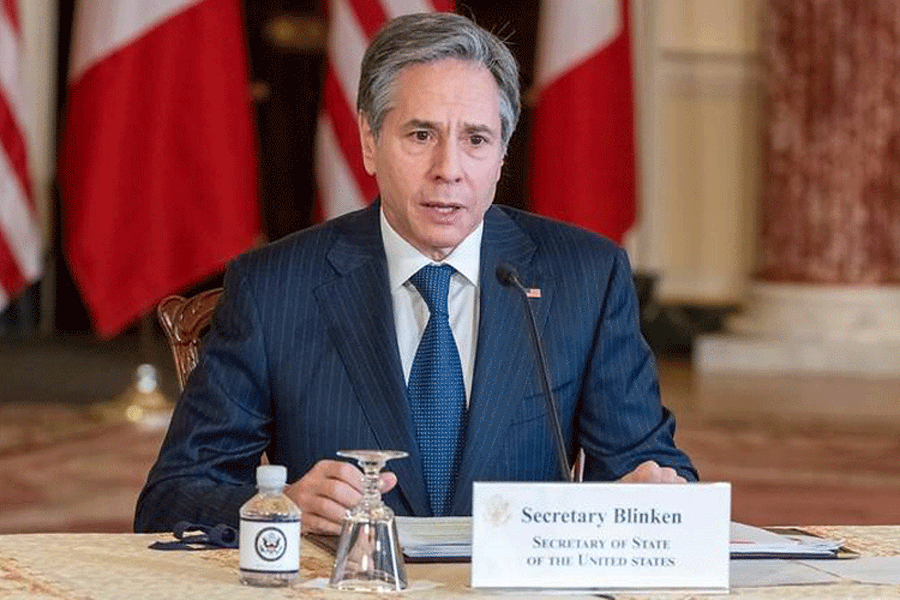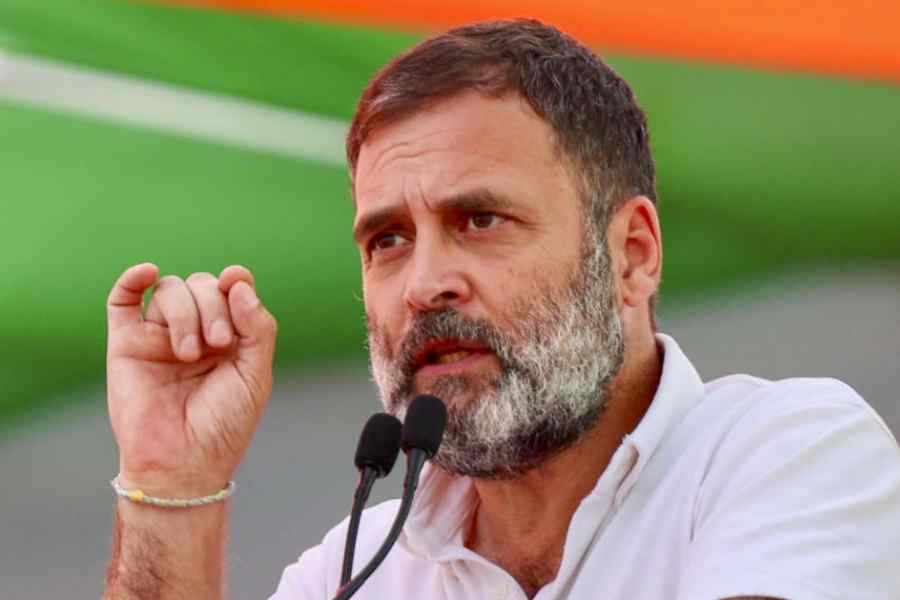It was always difficult to converse with Mulayam Singh Yadav, the Samajwadi Party chief who died last Monday at the age of 82. By the later stages of his life, this former wrestler’s rapid-fire mutterings had become quite incomprehensible to all but those who had mastered the art of deciphering him. I was not alone in my inability to comprehend Netaji — as he was popularly known. In their private conversations in the Central Hall of Parliament — where gentlemanly discretion always prevails — many Samajwadi members of Parliament freely confessed that the leader’s speech was difficult to follow.
That, of course, wasn’t always the case. I vividly recall the first occasion I heard him at a public meeting during the 1989 election campaign in some small town off the national highway to Varanasi. Mulayam walked at his characteristic brisk pace to the overcrowded dais of the Janata Dal. It was overcrowded because in the Janata Dal of those days, every local notable was a leader and everyone wanted some space next to the leader on the dais. The rumbustiousness of the Lohiaite socialist tradition ensured that chaos and indiscipline were second nature to those who were Netaji’s followers — quite unlike the Congress where there was a semblance of hierarchy and the Bharatiya Janata Party where there was too much of anushashan (discipline). In any event, Mulayam was running a few hours late — in those days the importance of a leader was often assessed in terms of how much he deviated from the scheduled time of a rally — and was in a hurry to reach Varanasi. He launched into a predictably populist diatribe against the then-prime minister, Rajiv Gandhi, and the Congress, charging them of running a government for the rich and the corrupt. Then, he took off on the perceived evils of Doon School and assured the cheering audience that when his party came to power, such angrezi schools would be abolished.
Like most Lohiaites, berating angrezi came naturally to Mulayam. I remember his visit to London in, I think it was 1995, ostensibly to invite investments. I don’t know exactly how much foreign capital he was able to garner for Uttar Pradesh which was then, as it happens periodically, in the throes of a law-and-order problem with charges of the ruling coalition being goonda-friendly in its approach. However, the chief minister held a press conference in the grand High Commission in Aldwych which was entirely devoted to domestic politics. I wanted to ask a question and did so in English — my Hindi not being up to the exacting levels of UP. Mulayam was visibly irritated, not at the question, but because I had spoken in English. Various overzealous officials who were part of Mulayam’s entourage tried to interrupt and urge me to speak in Hindi but I persisted. Some composure was restored when someone translated the question to the chief minister but it was evident that he didn’t like it.
In his subsequent career as defence minister in the two short-lived United Front governments, Mulayam must have mellowed his disavowal of English and — thanks in no small measure to his friendship with the colourful Amar Singh — acquired a reputation of being a patron of the rich and beautiful, but the populist in him lingered. To Mulayam, as with many other followers of Ram Manohar Lohia who acquired prominence in national politics, this pro-village, anti-elitist orientation was inextricably linked to the main pillar of Lohia socialism: anti-Congressism.
The Congress of today may be a pale shadow of its former self but until the early 1990s, it was the dominant force in Indian politics. The stand of different political parties — both on the Left and the Right—was judged on the strength of their relationship with the Congress. Lohia had advocated uncompromising opposition to the Congress—the basis of the Socialist Party split in the mid-1950s after which a section, including Ashoka Mehta and Chandra Shekhar, joined the Congress in the early 1960s after its commitment to the creation of a ‘socialistic’ society. From this position, the question of wavering didn’t arise. The true followers of Lohia could do business with the communists, regional parties and the saffron parivar but never with the Congress. The Congress, in their eyes, was the real untouchable — a line that someone such as George Fernandes followed till the very end.
Mulayam tried his utmost to adhere to this approach. His difficulties arose on two counts. Till 1991 at least, the non-Congress space was dominated by a mix of former Congress leaders who had established their regional parties — Charan Singh being the foremost example — and a rag-tag bunch of socialists and other Left activists. A relatively smaller, but more coherent, group was with the Jana Sangh and the then BJP. Depending on the circumstances, the Lohiaites viewed the Hindu nationalists with both warmth and suspicion. In 1979-80, it was the likes of Madhu Limaye who forced the collapse of the Morarji Desai government on the ‘dual membership’ issue. At the same time, in 1989, the Janata Dal entered into a seat adjustment understanding with the BJP to defeat Rajiv Gandhi. The situation got trickier after the BJP embraced the Ayodhya movement in 1989- 90 and moved rapidly into a position of dominance in the non-Congress space. Mulayam, like other socialists, was in a dilemma and was never quite sure whether to treat the Congress as the main enemy or direct the fire at the BJP. He ended up doing both.
If nothing, Mulayam will be remembered for his role after the Atal Bihari Vajpayee government was defeated by a single vote in 1999. The SP was under tremendous pressure from within and from the Communist Party of India (Marxist) outside to extend support to a government to be led by Sonia Gandhi. The pressure even came from the then president, K.R. Narayanan — at least this is what Amar Singh told me one day in the Central Hall—but Mulayam was unwavering. It was his intransigence that encouraged a split in the Left Front over support to the Congress and led to the stalemate that finally prompted fresh elections.
It is ironic that the same man who was dubbed ‘Mullah Mulayam’ by the BJP during the kar seva of 1990 ended up giving Vajpayee the respite to renew his mandate in 1999. This wasn’t because he was an opportunist. It is just that Mulayam’s principled politics had surpassed its sell-by date.










